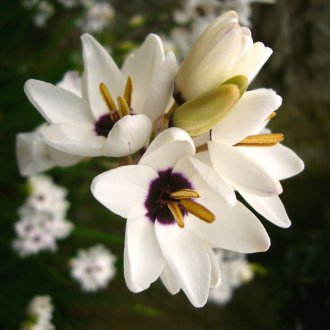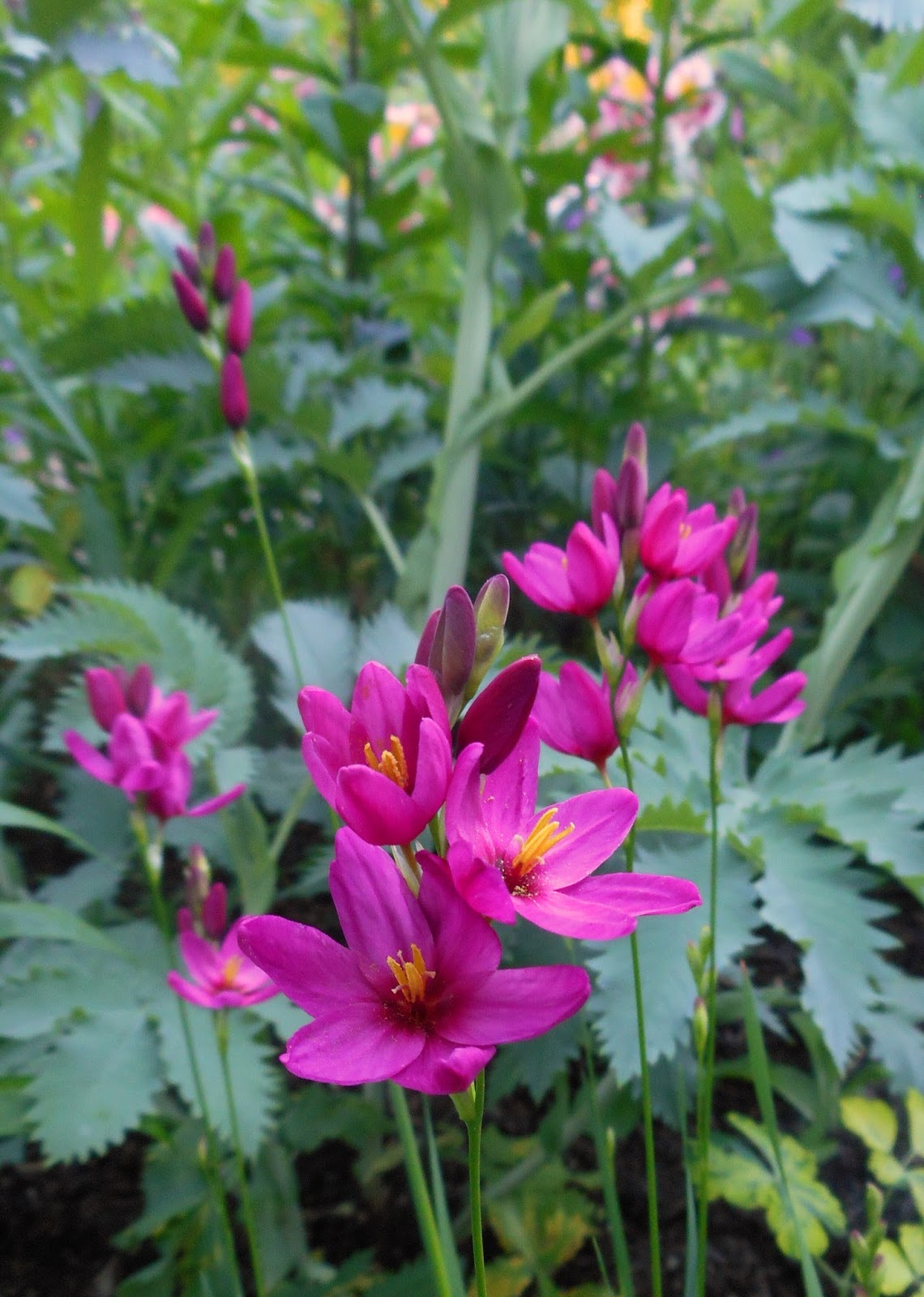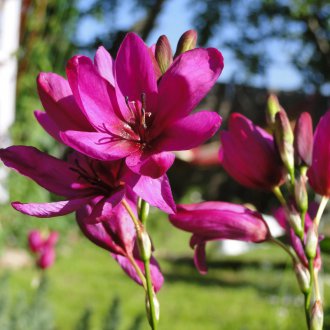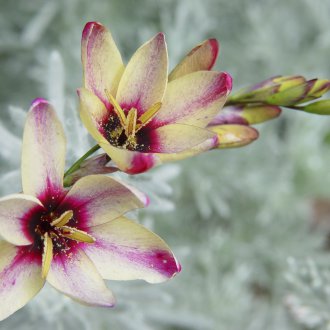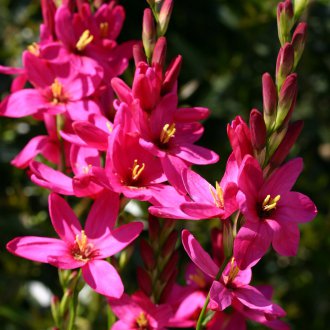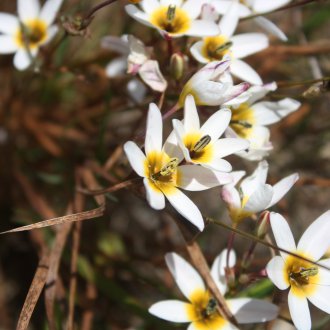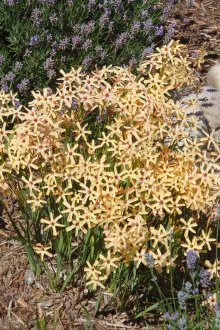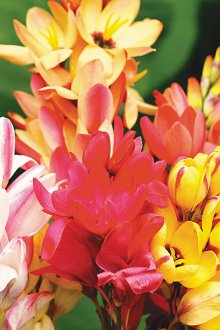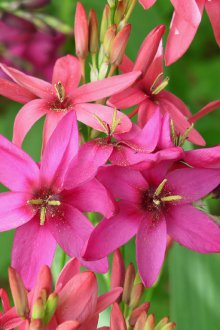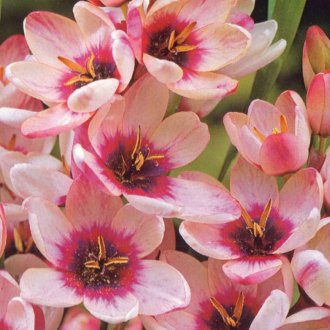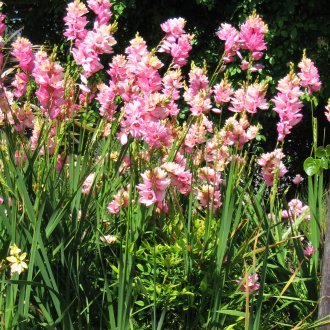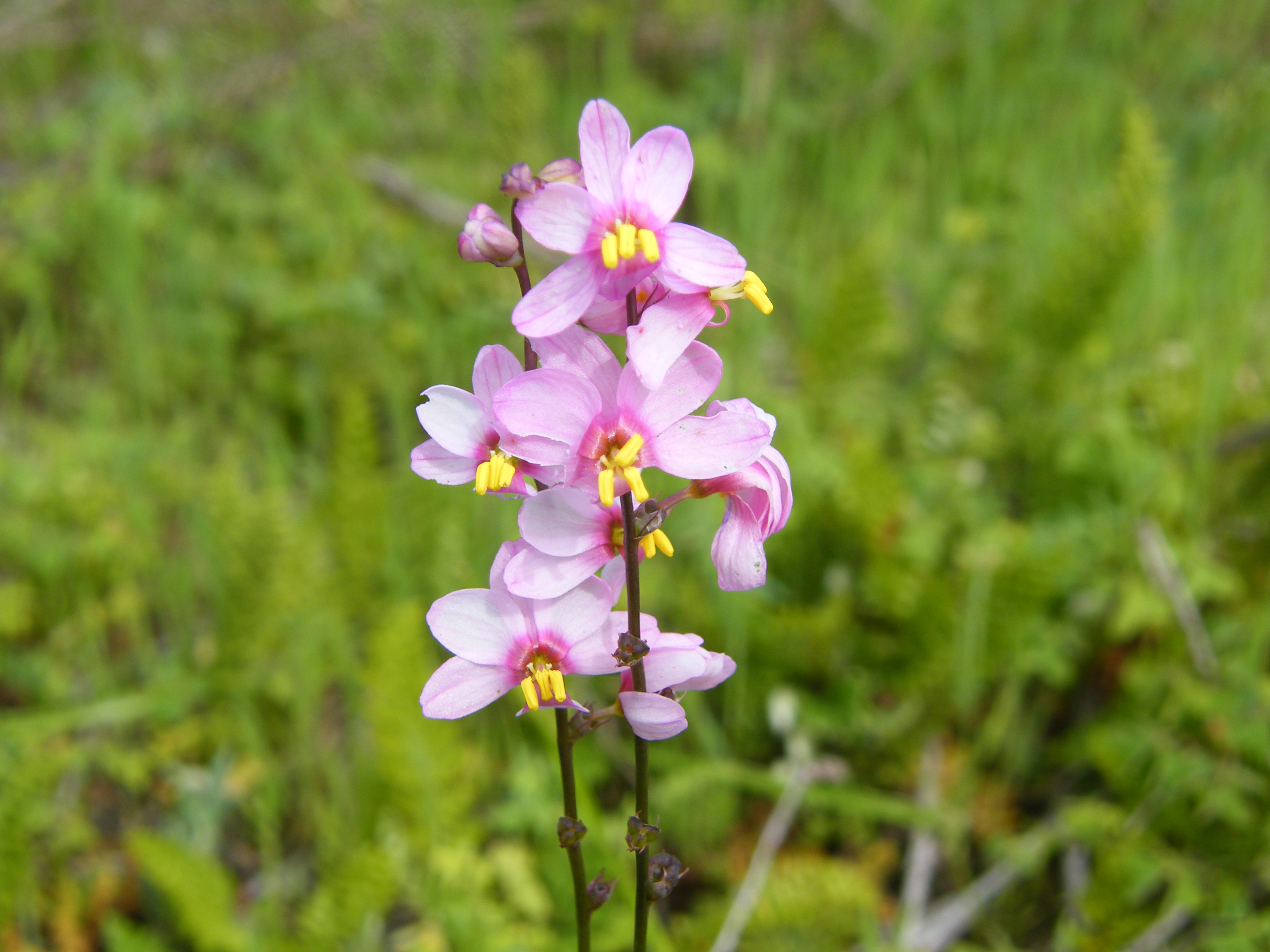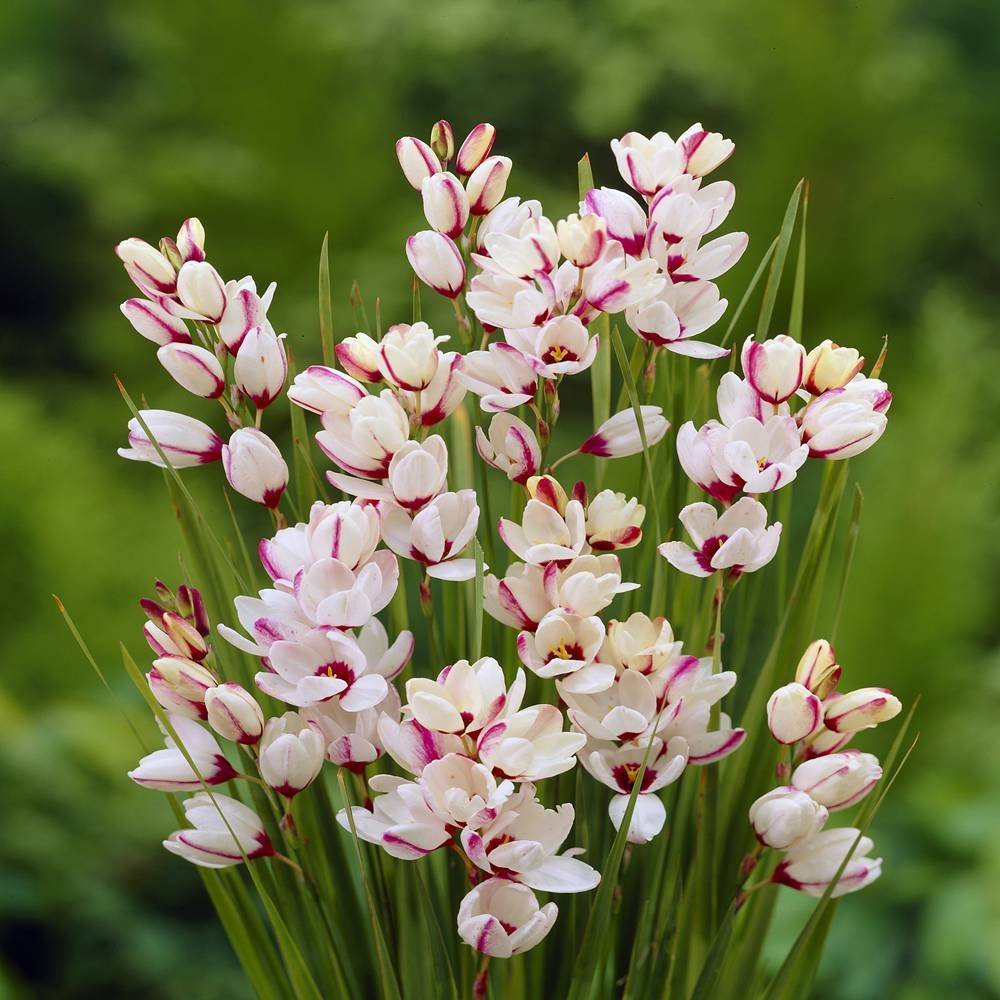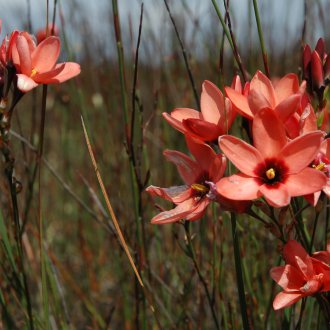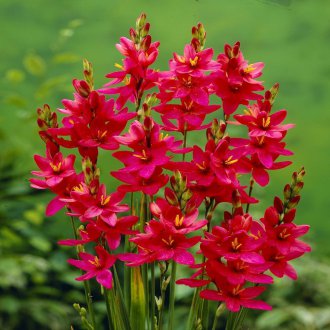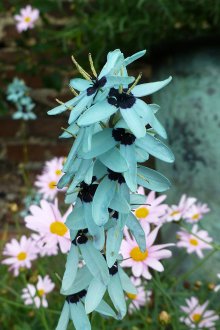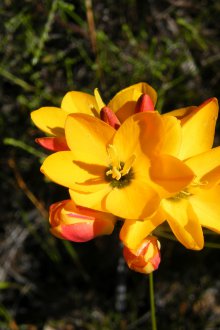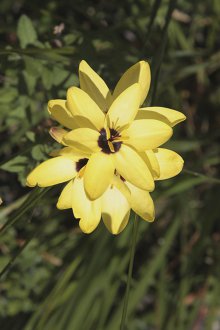Ixia: growing characteristics (21 photos)
Content
Ixia is a perennial shrub that many gardeners love. Exotic plant is great for landscaping the site. Gorgeous bright-blooming inflorescences require careful and reverent care.
Characteristic
Ixia is an ornamental garden plant of the iris family. The charming decoration of the homestead is able to take root only in the warm regions of Russia. This is due to its origin from South Africa.
The height of an adult plant reaches 50 cm. The flower is a leafless peduncle with spike-shaped inflorescences in the form of bells. In one inflorescence usually 6-12 flowers. Ixia has a wide variety of colors. Her leaves are narrow and arranged in two rows. Ixia fruit is a tricuspid webbed box.
Ixia begins to bloom in May and June. This process is very short - 3 weeks. At this time, the plant produces an amazing aroma. At night, the flowers close, and with the onset of dawn they again begin to delight others with their beauty.
Like any representative of exotic plants, Ixia loves moisture and light. The plant needs to be given a lot of attention so that it does not die. The place for her landing is chosen with particular care. Best flowers grow in a sunny meadow.
Varieties
Gardeners usually prefer hybrid species of Ixia (Ixia hybrida). Her flowers look like small stars. It is best suited for decorating the infield and distillation.
Popular varieties of ixia hybrid:
| Title | Coloring |
|---|---|
| Hogart | Cream yellow |
| Blue bird | Blue |
| Mabel | Carmine pink |
| Nelson | White |
| Vulcan | Bright orange |
| Goliaph | Red (large size) |
| Castor | Red |
| Early surprise | Carmine red with white |
| Giant | Creamy white |
| Holland’s glory | Yellow |
| Rose emperor | Light pink |
Still widespread species:
- Gimenokallis early;
- green flower;
- spotty;
- orazhnevaya.
Ixia Gimenokallis early is able to reach a height of 70 cm. Petals of a green flowering plant are colored in green, which stands in contrast to the blue-and-black pharynx. Spotted ixia has white petals with light purple edges. The orange look has a low height - only 20 cm.
Site preparation
The site is selected with good drainage to prevent stagnation of moisture. Before planting ixia carefully prepare the place. For this, the soil is well dug up and fertilized with humus or rotted manure. The addition of wood ash, surephosphate and magnesium is allowed.
If the earth is not loose enough, then sand is added to it. In heavy soil, ixia will not be able to grow. To eliminate this drawback, river sand is also used in the amount of 1 bucket per square meter.
Outdoor landing
Moody Ixia does not like frosts, so leaving in the open ground is more reverent. In the middle zone of our country, tubers are carefully dug up for the winter. The main thing is not to damage the root kidneys. The tubers are washed in a potassium permanganate solution, and then stored in a ventilated room with a temperature of 8-10 ° C.
In the spring, after the air and soil have warmed up, Ixia is planted in pre-prepared soil. Tubers are placed in holes 5-7 cm deep. They should be located at a distance of 20 cm from each other. Wells are covered with earth.
After all the manipulations, the soil is protected by a mulching coating with a thickness of 2-3 cm. The plant is not watered until the first shoots.
In the southern regions, landing is allowed not only in spring but also in autumn. In this case, the depth of the pits will be greater - 8-10 cm. Mulching is carried out by river sand. The layer thickness should be 8 cm. So the plant will tolerate winter cold well. In the spring, the protective coating is removed.
Cultivation and care
Ixia is weakly attacked by various pests, but caring gardeners provide her with reverent care. For reinsurance, the plant is planted annually in a new place. The main thing is the presence in it of fertile soil and an abundance of sunlight.
Maintenance in the open ground for ixia is impossible without observing the rules of irrigation. After the appearance of the first sprouts, it can be watered, systematically increasing the abundance of watering. In dry weather, the plant is irrigated from a sprayer, since it loves only moist air.
During the budding period, watering is carried out with special care. Special products are added to the water that increase the frequency of flowers on the bush.
The plant is fed with mineral and organic fertilizers. Care in the open ground for Ixia is facilitated due to the huge selection of specialized products in stores.
Timely removal of wilted parts not only improves the general appearance of the garden, but also makes it possible to form new flowers. Faded ixia is practically not watered, in some cases this process completely stops.
Due to insufficiently moistened soil, the plants begin to fade leaves. Do not forget about timely care in the open ground and stop daily monitoring the moisture of the earth. Excess moisture is also undesirable. Then onion forms on the bulbs.
Indoor planting and care
Ixia is grown at home in the conservatory or cold greenhouse. Indoor care is more labor intensive. Abundant flowering in such situations is ensured by the creation of artificial lighting and maintaining a stable cool air temperature. At first, an indicator is allowed not higher than 5 ° C, and then 13 ° C.
The tubers are planted in the first winter months, and already in May you can enjoy the abundant flowering of ixia. Care is carried out in the same way as for a plant in open ground.
Dug bulbs are prepared for storage with special care:
- are dried;
- processed by potassium permanganate;
- re-dried;
- wrapped in a newspaper;
- placed in a cool place.
Storage in the refrigerator is allowed.
Breeding
The reproduction of ixia occurs in three ways:
- by seeds;
- processes;
- dividing the bulbs.
The seed method is unpopular among gardeners. Usually it is used only for breeding new varieties. The seeds are mixed with sand and first sown in boxes. After the shoots appear and the bulbs are tied, the plant is transplanted into the open ground. Ixia, planted with seeds, blooms only after three years.
Propagation by root processes is possible not earlier than the third year of flower growth on the site. It is then that the shoots appear in the tubers. For breeding, they are separated and placed in containers with sand and peat. From this method, ixia begins to bloom in its second year.
Most often, the plant propagates by dividing the bulbs, since with this method it blooms in the first year. The bulb is split before planting in the spring season. It is necessary to ensure that each part has an eye and a rhizome. To prevent decay, the cut is sprinkled with ash.
Placing on the site
Ixia is a universal flower for landscape design, as it fits perfectly anywhere. It looks especially advantageous in such territories:
- flowerpots;
- flower bed;
- containers
- alpine hill;
- rocky rockery.
Flower beds with ixia should be created taking into account the rules for combining colors.Contrast combinations and plants similar in shades attract attention of people around. A real riot of colors can be felt from planting varieties of "mix".
Ixia looks naturally in the middle of the lawn. This is due to the simple shape of the flowers. It is good to combine neighbors with the same height with an exotic plant. This will become support for thin stems.
A huge variety of charming ixia buds is an excellent decoration of the site and the pride of any gardener. The forces spent on growing and care will be more than rewarded during the flowering of the plant.
